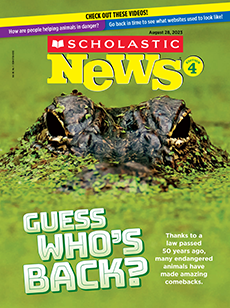Imagine packing everything you own and walking nearly 2,000 miles to find a new home. Starting in 1843, tens of thousands of Americans did just that. They migrated west on a pathway that became known as the Oregon Trail.
Last spring, students at Central Elementary School in Kearney, Nebraska, got a hint of what life was like for those pioneers. The students decorated shopping carts to look like covered wagons. They were also given pioneer family names. Then they spent a day working in groups to push their “wagons.” They walked nearly 3 miles along their own version of the trail.
“The Oregon Trail is a big part of our state history,” says teacher Troy Saulsbury. He’s been leading the project for his fourth-grade students for about 15 years.

